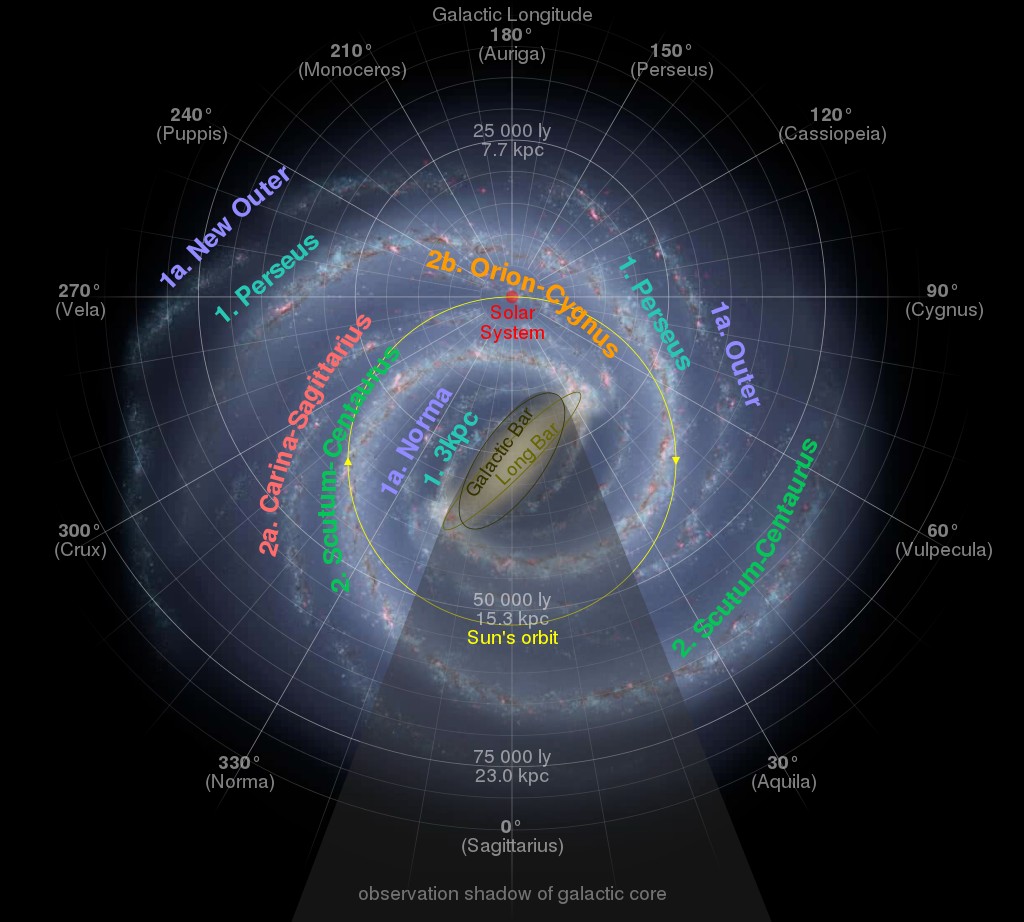An international team of astronomers announces that they have identified a long filament of dense gas connecting two of the spiral arms of the Milky Way. This work, published in The Astrophysical Journal Letters, also points to a sine wave-like pattern.
We have a fairly rough idea of the size and shape of the Milky Way, but understanding the structure of our galaxy from the point of view of Earth. It is also impossible to send probes beyond its limits to obtain an overall picture, as the distances of the Universe are enormous and our means of propulsion limited. Fortunately, with the right techniques, sometimes astronomers come across a few surprises.
A few months ago, an international team of astronomers from Germany, France and the United Kingdom notably came across a long, thin filament of gas connecting the Norma arm and 3 kpc of the Milky Way. To situate you, these are the two most central arms of the galaxy. Such filaments, also called "feathers", have already been isolated in other galaxies, but in ours, this is a first.
The researchers point out that they detected this structure using the APEX telescope in Chile, focusing on carbon monoxide (CO) in the Milky Way. They then detected different concentrations of this gas, some forming a long filament over at least 6,500 light years long. According to the authors, the structure would also have a mass approximately equal to nine million suns .
The researchers named the structure "Gangotri Wave". It is a tribute to the massive glacier whose melting gives rise to the Ganges.

Finally, the team also discovered that this strange filament displayed another unique feature. Rather than profile in a straight line, it zigzags back and forth along its length in a sine wave-like pattern. The researchers have not been able to explain this phenomenon, but point out that some force must be at play. They plan to continue their work to try to understand it, while looking for new galactic "feathers".
Note that a few months ago, a team of astronomers also announced that they had identified a contingent of young stars accompanied by clouds of gas protruding from one of the spiral arms of the Milky Way about 3,000 light-years away. Again, this was the first time such a structure had been identified in the Galaxy.